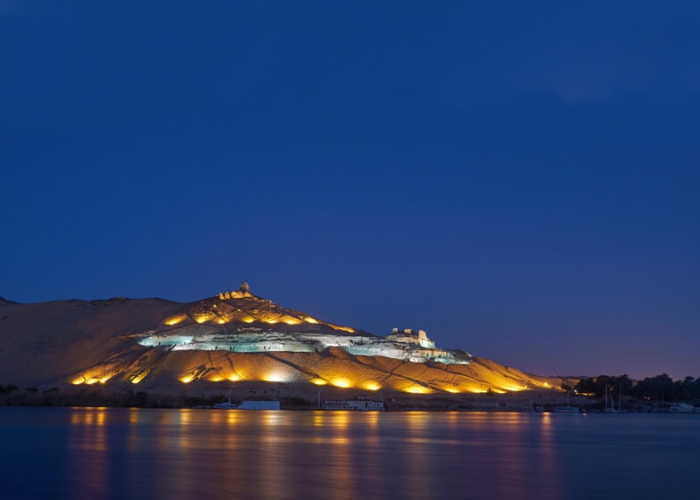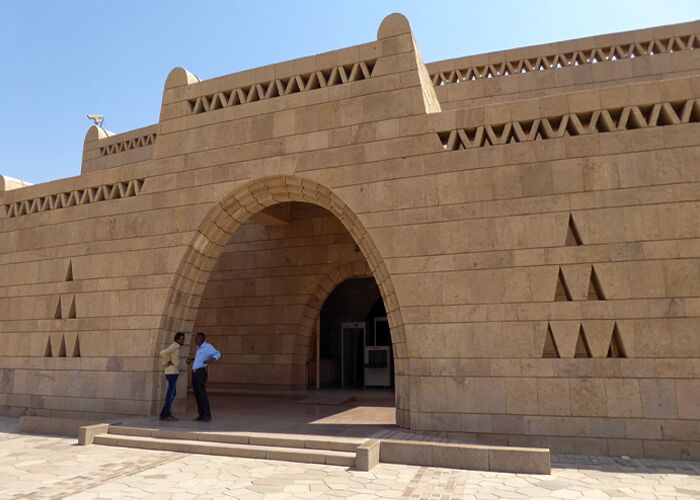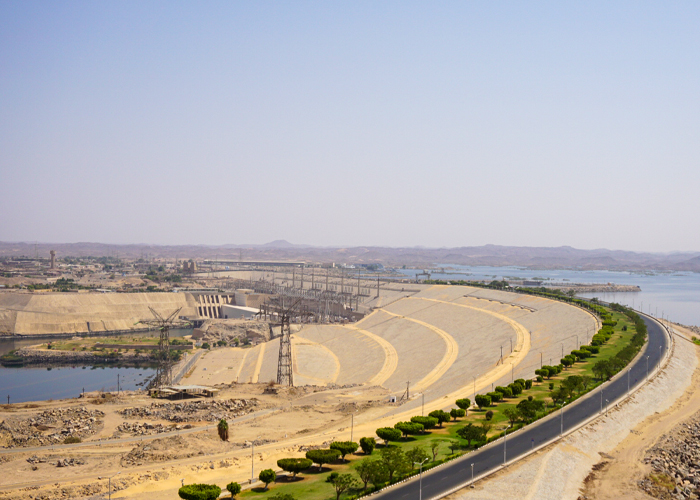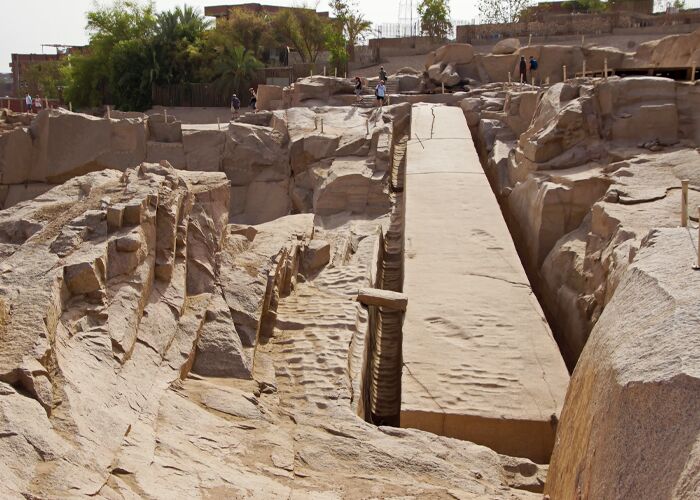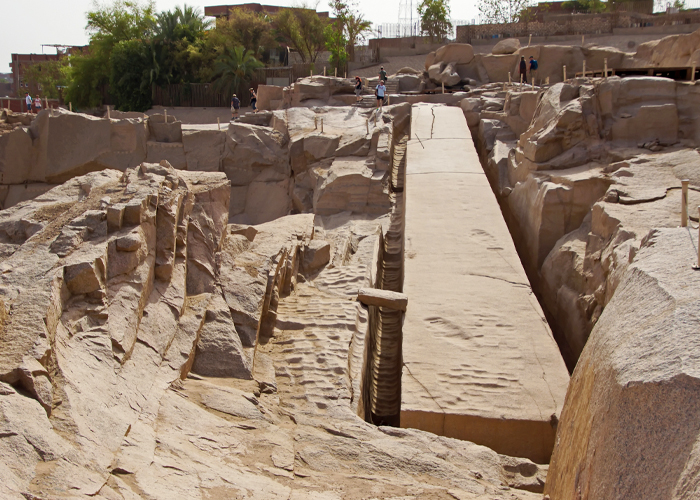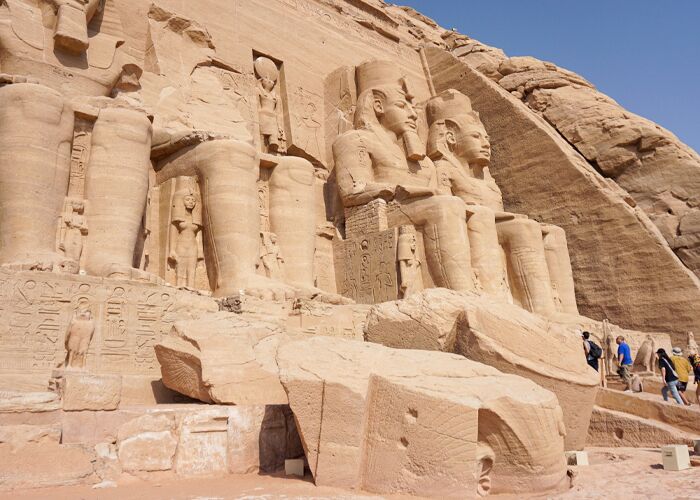Temple of Edfu: A Majestic Ancient Egyptian Wonder
The Temple of Edfu stands as one of Egypt’s most magnificent and well-preserved ancient temples. Dedicated to Horus, the falcon-headed god of the sky and kingship, the Temple of Edfu Egypt is a must-visit destination for anyone interested in ancient Egyptian history and architecture. Its grandeur and level of preservation provide a rare glimpse into Egypt’s religious practices, its mythology, and the artistry of its people.
Visitors to the Temple of Horus at Edfu are treated to an awe-inspiring journey back in time, walking through the same sacred halls where priests once performed rituals dedicated to Horus. In this guide, we will explore the history, architecture, significance, and travel tips for visiting this monumental structure in the heart of Egypt.
The History of the Temple of Edfu
The Temple of Edfu was built between 237 and 57 BCE during the Ptolemaic Dynasty, under the reigns of Ptolemy III and Ptolemy XII. It is one of the last great temples constructed in ancient Egypt and is dedicated to Horus, the god associated with the sky, war, and protection. This temple is unique in its preservation, as it was buried beneath sand for centuries, which shielded it from the ravages of time.
The temple’s construction was part of the Ptolemaic rulers’ efforts to reassert their rule over Egypt after the death of Alexander the Great. The Ptolemies saw themselves as heirs to the ancient pharaohs, and the Temple of Horus in Edfu served not only as a place of worship but also as a symbol of their divine right to rule. The temple’s construction also marked the culmination of Egypt’s long tradition of monumental religious architecture.
The Temple of Horus at Edfu is notable because it provides one of the clearest insights into ancient Egyptian religious practices, thanks to its detailed inscriptions and well-preserved structures. It also contains numerous reliefs that tell stories of Horus’s battles with his enemies, his protection of Egypt, and his role in the afterlife.
Architectural Features of the Temple of Edfu
The Temple of Edfu Egypt is a true masterpiece of Ptolemaic architecture. It was constructed in the typical Egyptian style, featuring massive pylons, a grand hypostyle hall, a sanctuary, and a series of courtyards. One of the most impressive features of the Temple of Horus at Edfu is its sheer scale and the grandeur of its design, making it one of the largest temples in Egypt.
Pylons and First Courtyard
The temple is preceded by two massive pylons, which are the monumental gateways to the temple’s interior. The pylons at Edfu stand at an impressive height of over 36 meters and are covered in intricate hieroglyphic carvings that depict the divine and royal scenes, including the famous battle between Horus and Seth, the god of chaos.
Beyond the pylons lies the first courtyard, which is an open area for religious processions. This courtyard served as a space where worshippers could gather before entering the temple’s inner sanctum.
The Hypostyle Hall
The Temple of Horus Edfu features a massive hypostyle hall, which is a hall filled with columns. This room, with its 12 colossal pillars, was used for religious ceremonies and processions. The walls are decorated with detailed reliefs depicting the triumph of Horus over Seth, symbolizing order and victory over chaos.
The Sanctuary and Inner Chambers
At the heart of the temple lies the sanctuary, where the most sacred part of the temple exists. It is here that the cult statue of Horus would have been kept. This room was carefully guarded and accessible only by priests. The sanctuary is simple in its design, but its significance cannot be overstated—it was the spiritual center of the temple, where divine communication was believed to occur.
Reliefs and Inscriptions
One of the most remarkable aspects of the Temple of Edfu Egypt is the abundance of well-preserved reliefs and inscriptions. These carvings, covering nearly every surface, provide detailed accounts of the rituals performed at the temple, the history of the temple’s construction, and the legendary battles between Horus and his enemies. Visitors can spend hours studying the intricate scenes, which offer valuable insights into ancient Egyptian beliefs, politics, and daily life.
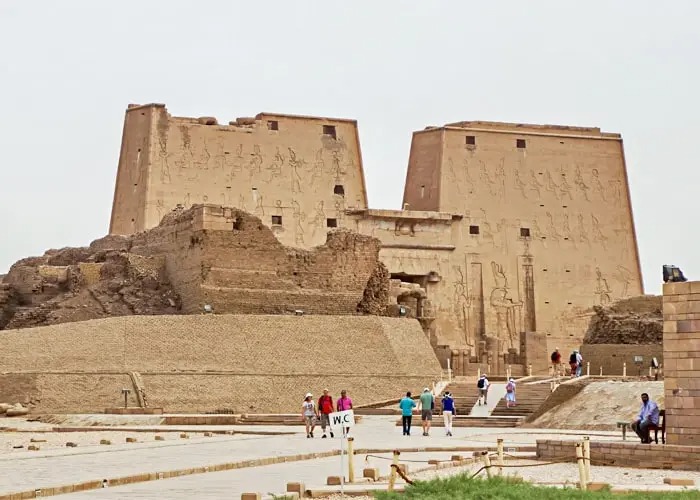
The Importance of the Temple of Edfu in Ancient Egyptian Religion
The Temple of Horus at Edfu was not just a place of worship but a central symbol in the religious life of Egypt. The temple’s role was multifaceted—it was a site for the annual Horus festival, which celebrated Horus’s triumph over Seth, marking the victory of order over chaos.
The temple’s significance also stemmed from its association with the pharaoh’s divine kingship. In ancient Egypt, the pharaoh was often regarded as the living embodiment of Horus. The temple played a crucial role in reinforcing this divine connection, with the pharaohs performing rituals to strengthen their legitimacy and ensure the continued prosperity of the kingdom.
The inscriptions found throughout the temple highlight various myths and religious practices surrounding Horus. Notably, the Horus of Edfu was believed to have been born in the town of Edfu, which further added to the spiritual significance of the site. Many reliefs in the temple depict Horus in battle, symbolizing the ongoing struggle between good and evil, a key theme in Egyptian mythology.
Visiting the Temple of Edfu: What to Expect
For travelers embarking on Edfu temple tours, there are a few essential things to keep in mind to make the most out of the experience.
Location and Accessibility
The Temple of Edfu is located on the west bank of the Nile River, between Luxor and Aswan, making it a convenient stop on many Nile cruise itineraries. The site is easily accessible by boat, taxi, or as part of a guided tour. Whether you’re arriving from Luxor or Aswan, the temple is a popular day-trip destination, and many tours will include visits to other important sites nearby, such as the Temple of Kom Ombo.
Best Time to Visit
The best time to visit the Temple of Edfu is in the cooler months, from October to April, when the weather in Egypt is more comfortable for sightseeing. Early mornings or late afternoons are ideal, as they offer a chance to avoid the peak crowds and the midday heat.
Temple Etiquette
When visiting the Temple of Horus in Edfu, it’s important to respect the sacredness of the site. Visitors should dress modestly, covering shoulders and knees. Photography is often allowed, but it’s always best to check the signs at the entrance or ask your guide about the rules.
Guided Tours
While it’s possible to explore the Temple of Edfu on your own, guided tours are highly recommended. Knowledgeable guides can provide detailed explanations about the temple’s history, symbolism, and the significance of the various reliefs. This adds a deeper layer of understanding to your visit and helps bring the ancient site to life.
The Temple of Horus at Edfu: Key Facts
-
Location: Edfu, Upper Egypt, between Luxor and Aswan
-
Dedicated to: Horus, the falcon-headed god
-
Date of Construction: 237-57 BCE, during the Ptolemaic Dynasty
-
Notable Features: Imposing pylons, large hypostyle hall, detailed reliefs and inscriptions
-
Significance: The most well-preserved temple of the Ptolemaic period, key to understanding ancient Egyptian religious practices
Why Visit the Temple of Edfu?
For travelers seeking to dive deep into the rich tapestry of ancient Egyptian culture, the Temple of Edfu is an unforgettable experience. The temple’s architectural beauty, detailed reliefs, and connection to the myth of Horus make it a fascinating site that provides insights into both the spiritual and political life of ancient Egypt. Whether you’re exploring it as part of a Nile cruise, or making a dedicated trip to the site, the Temple of Horus Edfu will leave you with lasting memories of Egypt’s ancient grandeur.
In conclusion: the Temple of Edfu is more than just a historical site; it’s a living testament to the power, artistry, and mythology of ancient Egypt. A visit to this awe-inspiring temple provides a deeper understanding of Egyptian culture and religion, allowing you to connect with the ancient world in a profound way.


